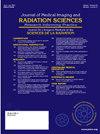Adapting to the Unknown: Development of an Education and Training Plan for the Implementation of a Cone-Beam Computed Tomography Based Online Adaptive Treatment System
IF 2
Q3 RADIOLOGY, NUCLEAR MEDICINE & MEDICAL IMAGING
Journal of Medical Imaging and Radiation Sciences
Pub Date : 2025-05-01
DOI:10.1016/j.jmir.2025.101943
引用次数: 0
Abstract
Purpose/Aim
Rapid technological advancements within radiation therapy present challenges in education and training. Historically, advancements within existing technology allow for the relation of current practice to new advancements in a linear fashion. The implementation of a new treatment platform is not a linear transition, requiring novel thinking, planning, and workflows This discussion aims to explore processes developed for the implementation of an Ethos treatment platform with online adaptive technology from a Radiation Therapist's (MRT(T)) perspective.
Methods/Process
Implementation of the Ethos treatment platform and online adaptive workflow required a multidisciplinary approach including Radiation Therapists, Medical Physicists (MP), and Radiation Oncologists (RO). A working group comprised of key stakeholders was formed and tasked with outlining the basic structure for implementation, draft treatment protocols, and standard operating procedures and training checklists. Within the adaptive workflow, MRT(T)s would be responsible for contouring organs at risk (OAR) known as influencer structures in addition to routine patient setup, imaging and treatment delivery. Initially, the MRT(T)s were to contour practice cases which would be reviewed by a certified Medical Dosimetrist. After completing a number of approved cases, the MRT(T) was signed off as competent. Unfortunately, it became evident that this process was resource intensive and unsustainable. MRT(T)s were however able to utilize a virtual imaging and treatment environment to practice the adaptive process including contouring. While still available, its use has been limited as we are now able to practice live in the treatment environment under the guidance of the RO.
Results or Benefits/Challenges
A significant benefit has been the implementation of a truly multi-disciplinary treatment environment. The adaptive workflow necessitates the teamwork of the MRT(T)s, MP, and RO for the treatments to be efficient and successful. For the MRT(T)s, there was a unique opportunity to be involved in implementation from the “ground up”. Other opportunities included research, policy development, novel working groups, and the opportunity to be part of a first in the world Ethos with Hypersight treatment platform. Within the adaptive workflow, MRT(T)s developed new skills in contouring and an improved understanding of clinical decision making and plan evaluation from the MP and RO groups. Developing a training process for the MRT(T)s was at times a “trial and error” process. While vendor training and practice sessions were paramount to our success, it was still difficult anticipate what the live treatment environment would be like. This led to uncertainties when attempting to develop training processes. Training was also a resource intensive process in a time of staffing shortages. Other challenges arose with integrating other disciplines into the MRT(T) workspace and adjusting to our “new normal” of practice.
Conclusions/Impact
The successful implementation of our Ethos treatment system and online adaptive workflow has reinforced the benefits of multidisciplinary collaboration. The education and training processes developed were imperative to enable the MRT(T)s to feel confident in their new role within the adaptive workflow. The increase in MRT(T) skills and capacity increases the possibility for future autonomy and increased scope of practice.
适应未知:基于锥形束计算机断层扫描的在线自适应治疗系统实施的教育和培训计划的发展
目的放射治疗技术的快速进步给教育和培训带来了挑战。从历史上看,现有技术的进步允许以线性方式将当前实践与新的进步联系起来。新治疗平台的实施不是线性过渡,需要新颖的思维、计划和工作流程。本讨论旨在从放射治疗师(MRT)的角度探讨用于实施Ethos治疗平台的在线自适应技术的流程。方法/流程Ethos治疗平台和在线自适应工作流程的实施需要多学科方法,包括放射治疗师、医学物理学家(MP)和放射肿瘤学家(RO)。成立了一个由主要利益攸关方组成的工作组,其任务是概述实施的基本结构、治疗方案草案、标准操作程序和培训清单。在自适应工作流程中,除了常规的患者设置、成像和治疗交付外,MRT(T)s还将负责勾画被称为影响者结构的危险器官(OAR)。最初,MRT(T)是轮廓的实践案例,将由注册医疗剂量师审查。在完成一些批准的案例后,MRT(T)被签署为合格。不幸的是,这一过程显然是资源密集和不可持续的。然而,MRT(T)能够利用虚拟成像和治疗环境来实践包括轮廓在内的自适应过程。虽然仍然可用,但它的使用已经受到限制,因为我们现在可以在主任的指导下在处理环境中进行现场练习。结果或益处/挑战一个显著的益处是实现了真正的多学科治疗环境。自适应工作流程需要MRT(T)s、MP和RO的团队合作,以使治疗有效和成功。对于捷运(MRT)来说,这是一个独特的机会,可以“从头开始”参与实施。其他机会包括研究、政策制定、新工作组,以及成为世界上第一个Hypersight治疗平台的一部分。在自适应工作流程中,MRT开发了轮廓的新技能,并改进了MP和RO组对临床决策和计划评估的理解。为捷运制定培训流程有时是一个“试错”的过程。虽然供应商培训和实践会议对我们的成功至关重要,但仍然很难预测实时处理环境会是什么样子。这导致在尝试开发培训过程时存在不确定性。在工作人员短缺的情况下,培训也是一个资源密集的过程。其他挑战还包括将其他学科整合到MRT工作空间中,并适应我们的“新常态”实践。结论/影响我们的Ethos治疗系统和在线自适应工作流程的成功实施加强了多学科合作的好处。为了使MRT(T)对他们在自适应工作流程中的新角色感到自信,所开发的教育和培训过程是必不可少的。MRT(T)技能和能力的提高增加了未来自主和扩大实践范围的可能性。
本文章由计算机程序翻译,如有差异,请以英文原文为准。
求助全文
约1分钟内获得全文
求助全文
来源期刊

Journal of Medical Imaging and Radiation Sciences
RADIOLOGY, NUCLEAR MEDICINE & MEDICAL IMAGING-
CiteScore
2.30
自引率
11.10%
发文量
231
审稿时长
53 days
期刊介绍:
Journal of Medical Imaging and Radiation Sciences is the official peer-reviewed journal of the Canadian Association of Medical Radiation Technologists. This journal is published four times a year and is circulated to approximately 11,000 medical radiation technologists, libraries and radiology departments throughout Canada, the United States and overseas. The Journal publishes articles on recent research, new technology and techniques, professional practices, technologists viewpoints as well as relevant book reviews.
 求助内容:
求助内容: 应助结果提醒方式:
应助结果提醒方式:


